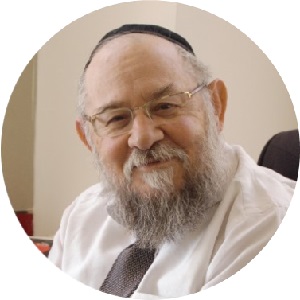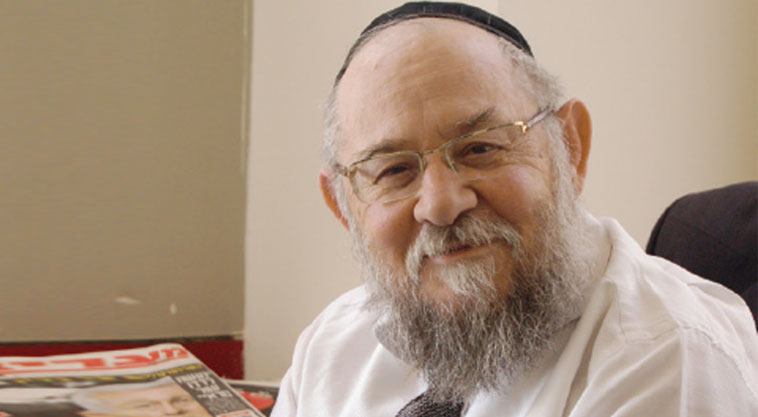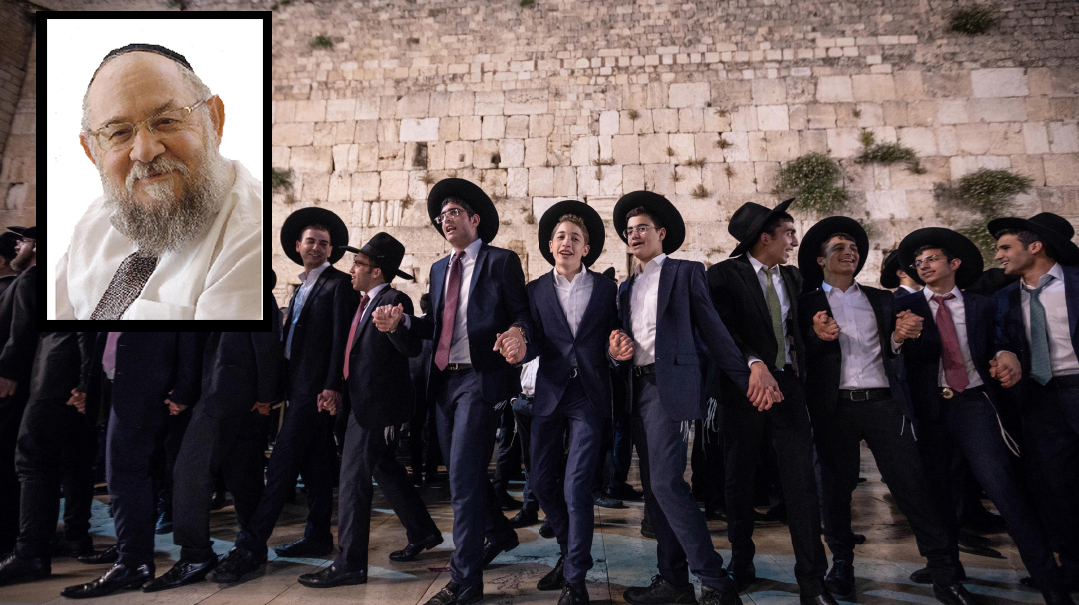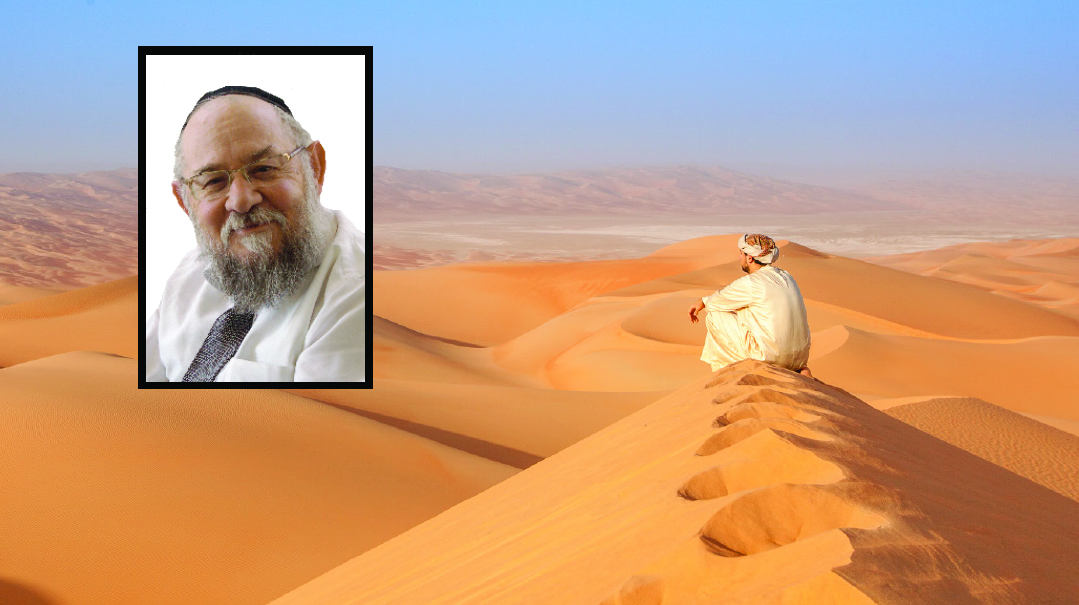Reach for the Moon

What does the moon have to do with the Exodus?
Right in the middle of the narrative detailing the preparation for the first Korban Pesach, when Bnei Yisrael were in a frenzy of preparation to leave Egypt, Hashem interrupts the story with a commandment about sanctifying the new month. But what does the moon have to do with the Exodus?
N
o doubt you’ve read many times over the chapters in Sefer Shemos which describe the redemption of Bnei Yisrael from Egypt. And you are surely familiar with the passages describing the first Korban Pesach to be offered before leaving Mitzrayim — “a lamb for each parental home” — and the terrifying Makkas Bechoros that signaled the end of our enslavement. You all know how Pharaoh, the arrogant king who proclaimed, “Who is Hashem that I should listen to Him?” was reduced to frantically pleading, “Go out from the midst of my people!”
Of course you know the text well. But how do the opening words of the chapter of redemption, “This month is to you the head of months,” fit into the story of Yetzias Mitzrayim? It speaks of the mitzvah of Kiddush Hachodesh, a mitzvah that would not even come into practice until many years later, after Bnei Yisrael were settled in their promised land. What does this mitzvah have to do with a narrative about breaking Pharaoh’s hold over Bnei Yisrael and removing them from his domination? Why is it mentioned here and then dropped with no explanation as the Torah immediately moves on to prescribe the details of the Korban Pesach? Was Kiddush Hachodesh at the top of the agenda just then?
Let’s imagine the scene in Goshen. Moshe Rabbeinu is preparing the people for a dramatic exit from this house of bondage. In a short while, every firstborn son in Egypt is going to fall down dead. Meanwhile, the air is full of excitement and suspense as they begin slaughtering and roasting their lambs, defying their oppressors who deify these animals. And the Torah chooses that moment to mention that “This month is to you the head of months.” The mitzvah of sanctifying the month had no practical application at that time. The people were bustling about, organizing themselves into family groups or arranging to join their neighbors in bringing the Pesach offering and consuming it. Was this the time to think about a mitzvah that their children and grandchildren would perform much later on? And if the Torah wished to convey a message to them about the obligations that would come with their redemption, shouldn’t it have chosen a moral message like “Love your fellowman as yourself,” or “Honor your father and your mother” — messages that were truly fundamental to the society they would be building in Eretz Yisrael?
Regarding the mitzvah, the Midrash says:
“Rabi Yehoshua ben Levi said, ‘It can be compared to a king who had a timepiece. He would look at it and know the hour of the day. When his son came of age, he gave him his timepiece. So did HaKadosh Baruch Hu say: Until now, the calculation of months and years was in My hands; from now on, it is handed over to you. If you say yes, then yes. If you say no, then no. In any case, this month shall be to you the first of months.” (Yalkut Shimoni, Parshas Bo, 190)
In other words, HaKadosh Baruch Hu presented Bnei Yisrael with a gift. Like a chassan receiving a watch at his engagement celebration, Bnei Yisrael received a device for marking time. Still, why did HaKadosh Baruch Hu see this as an essential part of the redemption process?
Let’s now examine how the mitzvah worked in actual practice while the Beis Hamikdash was standing, and as long as there was still a Sanhedrin in Eretz Yisrael.
At the end of each month, each lunar cycle, the moon wanes as it completes its orbit and comes back into alignment with the sun. At the point of alignment, the moon is completely dark and invisible to our eyes. In Temple times, from the moment the moon disappeared, the people began to watch for its reappearance as it moved out of alignment with the sun and a thin crescent of reflected light was seen once again. The moment the moon reappeared, a Jerusalem marathon began, with every pair of witnesses hurrying to testify before the Sanhedrin that it was time to sanctify a new month. This testimony was so important that under certain circumstances, the witnesses were even permitted to desecrate Shabbos in order to get to the Holy City without delay. Clearly, this monthly event was permeated with great excitement.
But this brings up a more fundamental question: Why was this rather cumbersome procedure even necessary? Chazal knew how to calculate the time of the molad, the emerging new moon, with great precision. Why should they wait for witnesses to arrive, leaving the whole nation in suspense? Until the day of Rosh Chodesh was announced, the people wouldn’t know when the various holidays fell. And why should witnesses have to rush to Jerusalem as soon as they spotted the first sliver of the new moon?
Among other reasons for placing the mitzvah of Kiddush Hachodesh right at the beginning of the redemption story, some commentaries explain, is that the Torah was concerned that as years went by, the thrill of that Geulah would gradually wear off. The people would forget the grandeur of the events that took place when they left Egypt, and would cease to live by their light — which is indeed what happened at various times in our history.
So what did the Torah do? It gave us a cycle of renewal to preserve at least a vestige of the excitement that prevailed on the eve of Yetzias Mitzrayim. Through the mitzvah of Kiddush Hachodesh, we experience the rebirth of the moon every month anew, and the exaltation of the moment the mitzvah was given is constantly recreated.
Rav Hirsch teaches us as follows: “And so Hashem began the inner molding of His people, by fixing a sign that would return periodically, focusing the people’s gaze on it anew every time, calling it constantly to a rebirth out of the darkness of fixed ideas and decadence, and ensuring everlasting freshness for truth and purity, steeling them forever against Egyptian stagnation, spiritual and moral stagnation.”
This is the secret that has the power to maintain Am Yisrael’s vitality perpetually — the secret of renewal. Just as the moon, at the moment it disappears, is already about to reappear, so did the Jewish People in the days of the Sanhedrin experience that same renewal every month, constantly recalling the darkness of Mitzrayim, only to emerge once again as Hashem’s people. We, too, can connect to this idea when we recall Yetzias Mitzrayim, using our power of imagination as our tool. Every year we say, “A person is obligated to see himself as if he were leaving Egypt.” Why the emphasis on the word “see”? Because in our mind’s eye, we are meant to picture ourselves vividly as part of the scene as Bnei Yisrael walked out from under Pharaoh’s thumb. Rav Yechezkel Levenstein ztz”l would walk back and forth in his room every year before Pesach, practicing the art of imagining himself among the throngs of Bnei Yisrael leaving Egypt. He actually made it his own personal experience. This sort of mental preparation, learned from the regular exercise of Kiddush Hachodesh, is obligatory if we wish to experience the Seder night properly.
In Michtav MeEliyahu, Rav Eliyahu Eliezer Dessler ztz”l says that one who practices this mental exercise will feel an emotional and cognitive connection to Yetzias Mitzrayim as if he had actually left Egypt personally, and when he achieves this state of mind, he will see that it also filters down to the younger members of his household.
All this is contained in the astronomy-based timepiece that HaKadosh Baruch Hu presented to Am Yisrael on the eve of our redemption — a gift of constant renewal to keep these moments of Geulah fresh for all the time.
Chag kosher v’samei’ach!
(Originally featured in Mishpacha, Issue 704)
Oops! We could not locate your form.




